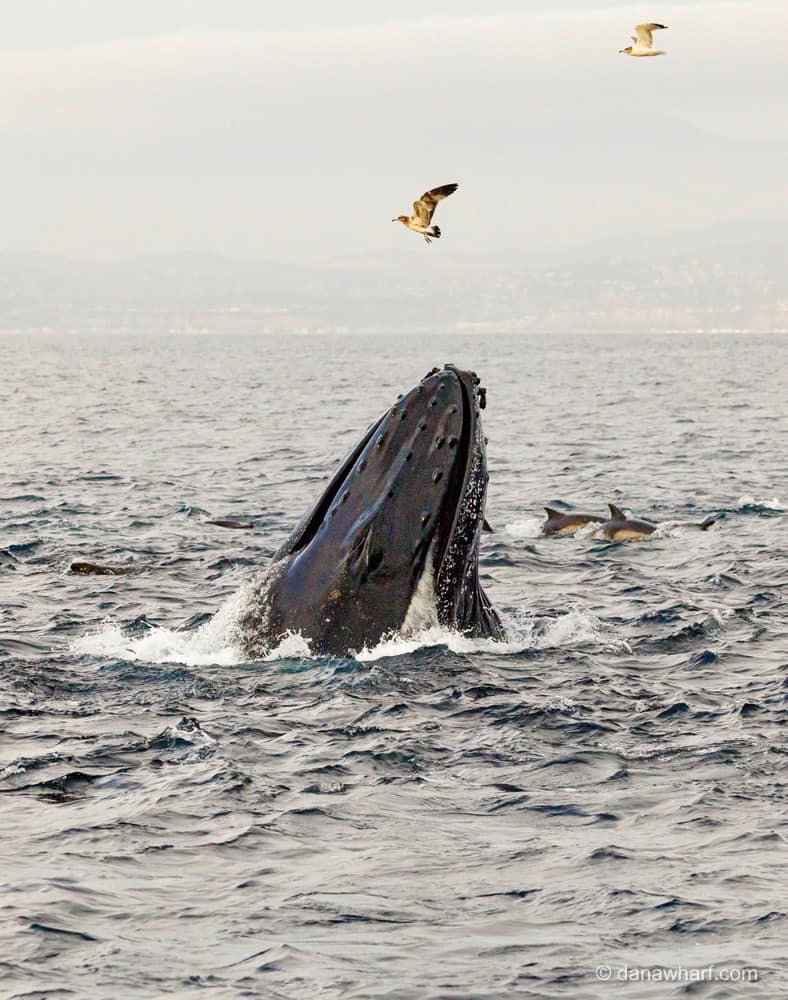Whale Watching Wonders: Ranking Dana Point’s Most Acrobatic Whales

The thrill of a whale watching trip from Dana Wharf isn’t just about spotting these incredible creatures; it’s about witnessing their raw power and playful spirit! While every whale encounter is magical, some species are renowned for their breathtaking aerial displays and surface antics.
As the “Dolphin & Whale Watching Capital of the World,” our waters are a prime location to observe these ocean gymnasts. Here’s a ranking of the whales you might encounter, from the most consistently acrobatic to the more subtle observers of the deep.
Tier 1: The Ultimate Acrobats & Show-offs (Most Playful!)
These whales are the undisputed champions of aerial displays and surface activity. If you’re hoping for breaches and splashes, these are your best bets!

- Humpback Whales:
-
- Why they’re #1: Humpbacks are the rock stars of the whale world. They are famously known for their spectacular breaching (leaping entirely out of the water), often multiple times in a row. They also frequently engage in tail lobbing (forcefully slapping their fluke on the surface), pec-slapping (slapping their long pectoral fins), and spyhopping (lifting their head out of the water to look around). Their long flippers give them incredible agility.
- Common Behaviors: Full breaches, half breaches, tail lobs, pec slaps, spyhops, head lunges.

2. Orcas (Killer Whales):
-
- Why they’re so acrobatic: While not whales in the technical sense (they’re the largest dolphins), Orcas are incredibly athletic and intelligent. When they are sighted, they often put on a show with powerful breaches, spyhops, tail lobs, and bow-riding, especially when traveling or hunting. Their agility and social nature contribute to their dynamic displays.
- Common Behaviors: Breaching, spyhopping, tail slapping, porpoising (fast swimming with repeated leaps), bow-riding.
Tier 2: Capable Performers (Occasional Displays)
These whales are less consistently acrobatic than Humpbacks or Orcas, but they are certainly capable of impressive displays, especially in certain contexts.

1. Gray Whales:
-
- Why they’re acrobatic (in their own way): During their migration, Gray Whales are well-known for spyhopping, often lifting their entire head and even part of their body out of the water. While full breaches are less common than for Humpbacks, they do occur. They are also known for “rolling” at the surface, showing their barnacled backs, and sometimes “milling” around boats.
- Common Behaviors: Spyhopping (very frequent), rolling, occasional breaches, minor tail slaps.
2. Sperm Whales:
-
- Why they’re acrobatic (when they show it): Sperm whales are deep divers, spending most of their time hunting squid in the abyss. However, when they do come to the surface, they are known to breach powerfully, sometimes launching their massive, block-shaped heads out of the water. They also perform distinctive fluking (lifting their tail high out of the water before a deep dive). While breaches are not daily occurrences, they are incredibly impressive when they happen.
- Common Behaviors: Powerful breaching (infrequent), fluking (very common before deep dives), logging (resting at the surface).
Tier 3: More Reserved (Less Frequent Aerial Displays)
These large whales are generally less prone to explosive surface acrobatics, focusing more on efficient travel and feeding, though they can surprise you!
- Blue Whales:
-
- Why they’re more reserved: As the largest animals on Earth, Blue Whales are incredibly powerful but generally less “acrobatic” in the traditional sense. Their immense size means a full breach is an extraordinary expenditure of energy. You’ll typically see their massive back and dorsal fin as they surface, followed by their characteristic tall, columnar blow. They do occasionally “lunge” to feed, which can involve part of their body coming out of the water.
- Common Behaviors: Surfacing (showing their back and dorsal fin), powerful blows, occasional fluking (often a subtle “fluke-down” dive), lunge feeding.

2. Fin Whales:
-
- Why they’re more reserved: Known as the “greyhounds of the sea” due to their speed, Fin Whales are streamlined and efficient swimmers. Like Blue Whales, their primary surface activity involves surfacing for air and showing their sleek backs and dorsal fins. Breaching is very rare but not impossible, often occurring during high-energy social interactions or specific environmental conditions.
- Common Behaviors: Fast surfacing, prominent blow, generally not known for aerial displays.
3. Minke Whales:
-
- Why they’re more reserved: Minke whales are the smallest of the baleen whales seen here and are generally quite elusive. They are fast swimmers and tend to spend less time at the surface compared to Humpbacks. While they can breach, it’s a less common sight than with their larger, more demonstrative cousins.
- Common Behaviors: Surfacing for quick breaths, often more difficult to track due to their speed and less conspicuous surface activity. Breaching is rare.
The Unpredictable Thrill of Every Trip!
It’s important to remember that whale behavior is always unpredictable. While this ranking provides a general guide, marine animals are wild, and you never know what incredible display you might witness. Sometimes, even the “less acrobatic” species can surprise you with a unique moment!
At Dana Wharf, our experienced captains and naturalists are constantly on the lookout for any surface activity, ready to share the excitement with you.
Ready to witness these magnificent ocean acrobats? Book your Dana Wharf whale watching trip today and prepare to be amazed by the power and grace of the whales and dolphins off our coast!
